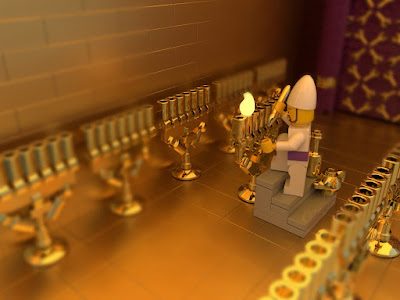Beis Hamikdash Topics
A collection of information, sources, and ideas about the design and use of the Second Temple
Sunday, October 19, 2025
Calculating the Wine Libations
On Succos in the Beis Hamikdash they famously offered 70 bulls corresponding to the seventy nations of the world. Along with each bull came a wine libation of 6 lugin per bull, which is a volume equal to about 3 liters (or one and a half soda bottles, for those of us in the US). This comes to about 210 liters in all, and that is not even counting the wine libations of all of the other communal offerings that were brought over the holiday. What was the fate of all that wine?
Sunday, October 5, 2025
Sunday, September 28, 2025
Sunday, September 21, 2025
Sunday, September 14, 2025
Sunday, September 7, 2025
Sunday, August 31, 2025
Sunday, August 24, 2025
Sunday, August 17, 2025
Tamid Photo Essay in Lego® #20
The Shot
Bordeaux, Monsieur?
The Memuneh looks on as Yonasan the Levi collects the wine for the nesachim of the Tamid offering.
Sunday, August 10, 2025
Sunday, July 20, 2025
Tamid Photo Essay in Lego® #18
The Shot
Mopping Up
A Kohen throws the blood of the Tamid offering onto the northeastern corner of the Mizbeyach.
Sunday, July 13, 2025
Sunday, July 6, 2025
Sunday, June 29, 2025
Sunday, June 22, 2025
Subscribe to:
Comments (Atom)














